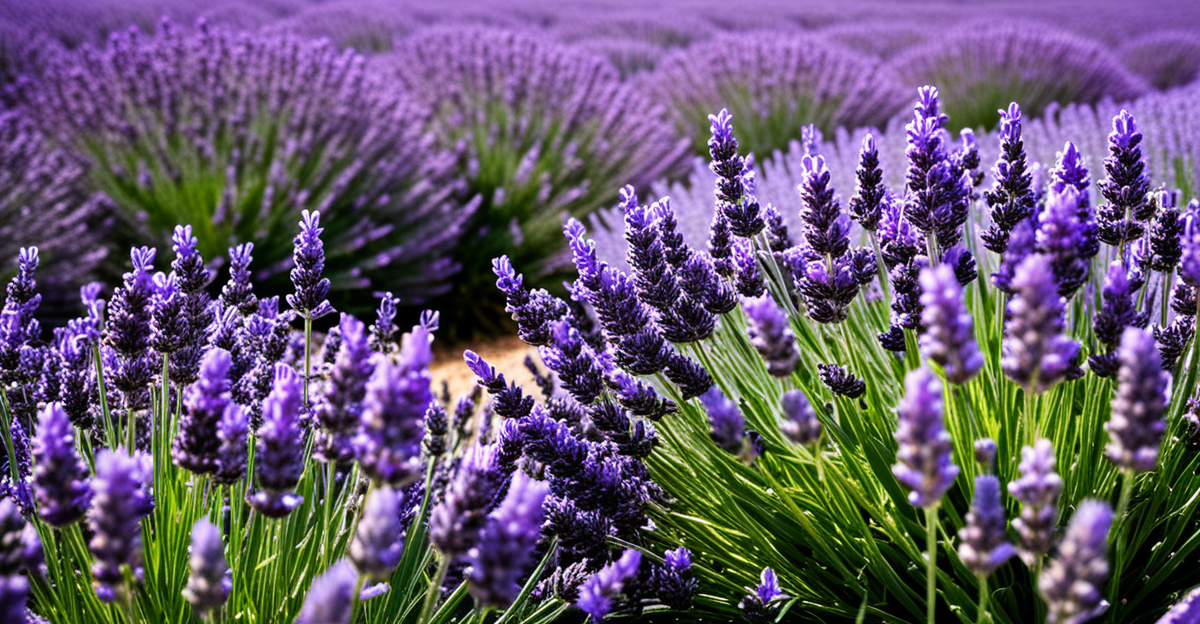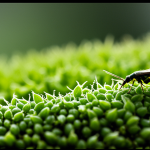Choosing the Best Lavender Varieties for UK Gardens
Selecting the best lavender for UK climate involves understanding which UK lavender varieties thrive in the region’s cool, often damp conditions. English gardens demand varieties that can tolerate humidity and occasional frost while rewarding gardeners with plentiful blooms and strong fragrance.
Among the top choices for the UK are lavenders from the lavandula angustifolia group, prized for their resilience and classic scent. Varieties like ‘Hidcote’ and ‘Munstead’ are especially popular, offering high yields and adaptability. These types resist diseases and maintain structure through the changeable seasons, aligning well with expert lavender tips for long-term garden success.
This might interest you : Mastering greenfly biocontrol: top strategies for uk greenhouse success
Gardeners aiming for vibrant, long-lasting blooms should also consider the plant’s growth habit and flower colour. For example, shorter varieties suit rockeries or pots, while taller ones create stunning hedges. Matching lavender varieties to your gardening goals, whether for ornamental appeal or pollinator support, means choosing plants that balance beauty and hardiness suited to the UK.
By focusing on hardy, well-tested varieties, you ensure your lavender bed flourishes despite the region’s characteristic climate quirks. This practical approach is central to achieving the best results in any British garden.
Topic to read : Unlock the secrets to thriving perennial vegetables: advanced growing techniques for uk gardens
Preparing Soil and Site for Optimal Lavender Growth
Successful lavender cultivation starts with lavender soil requirements tailored to UK conditions. Lavender thrives in well-drained, slightly alkaline soil with a pH between 6.7 and 7.3. Ensuring proper drainage is crucial because UK soils often retain moisture, risking root rot. To prepare soil for lavender, incorporate grit or sand to enhance drainage, especially in heavier clay soils common in the UK.
When preparing soil for lavender, add organic matter like compost sparingly; too rich a soil hinders flowering. Avoid excessive nitrogen levels which encourage leafy growth but reduce blooms. Test soil pH and amend with garden lime if acidity is high, aligning soil chemistry with the best lavender for UK climate needs.
Selecting the optimal planting location UK means choosing the sunniest spots available—ideally 6 to 8 hours of direct sunlight daily. Sheltered south-facing walls or raised beds provide warmth and air circulation, two critical factors for lavender health. These expert lavender tips ensure roots remain dry and plants receive maximum light, fostering dense, fragrant flower heads. Proper soil and site selection lay the foundation for vibrant UK lavender varieties that flourish season after season.
Planting Techniques and Timing for UK Conditions
Choosing the right moment for planting lavender UK is crucial. The optimal time is late spring to early summer when the risk of frost has passed. This timing allows lavender to establish roots before cooler weather returns. Planting too early exposes young plants to winter damage, while too late reduces growing season length.
When considering spacing and depth, plant lavender to allow air circulation—typically 30 to 45cm apart. This prevents overcrowding, a common cause of fungal issues in damp UK climates. Ensure the planting hole matches the root ball size and avoid burying stems too deeply to protect against moisture stress.
A step-by-step lavender planting approach helps beginners and enthusiasts alike:
- Select a sunny, well-drained site per optimal planting location UK criteria.
- Dig a hole wide and deep enough for the roots.
- Gently tease roots if pot-bound.
- Position the plant, filling around roots with prepared soil.
- Firm soil lightly but avoid compacting.
- Water immediately to settle the soil.
Following these steps maximises survival chances and promotes robust growth, reflecting essential expert lavender tips for UK gardeners.
Watering, Feeding, and Essential Maintenance
Maintaining healthy lavender in the UK hinges on watering lavender correctly. Lavender prefers infrequent, deep watering rather than frequent shallow sprays. Overwatering risks root rot in the often-moist UK climate. Water only when the soil feels dry an inch below the surface, especially in summer’s heat. This supports strong root development and reduces fungal problems.
When it comes to fertilising lavender UK, err on the side of moderation. Use a balanced, slow-release fertiliser with low nitrogen to avoid excessive leafy growth at the expense of fragrant blooms. Applying fertiliser in early spring just before growth resumes sets plants up well for the season.
Lavender thrives with simple lavender care tips applied regularly. Remove weeds to reduce competition for nutrients and water. Mulching with gravel or sand helps maintain soil dryness, deterring pests and diseases. In spring and autumn, clear dead stems and fallen debris to boost air circulation around your plants.
These practical, expert lavender tips promote resilient growth and maximize flower production, ensuring your lavender presents at its best throughout the UK’s variable seasons. Consistent care—water, feed, and maintenance—is key to a thriving garden feature.
Pruning Strategies for Health and Abundant Blooms
Pruning lavender UK gardens is essential to maintain plant health and encourage prolific flowering. The best time for pruning lavender UK is late summer, right after flowering finishes. This timing allows plants to recover and develop fresh growth before winter. Avoid cutting into old woody stems as these won’t regenerate new shoots.
How to prune lavender effectively involves trimming about one-third of the new growth, shaping the plant into a neat mound. This practice promotes bushier plants by stimulating lateral shoots rather than vertical, woody growth. Regular pruning every year prevents the plant from becoming leggy or sparse.
Expert lavender tips highlight that pruning also reduces the risk of disease by improving air circulation around the stems. Use sharp, clean garden shears to make angled cuts just above leaf nodes. This encourages healthy sprouting and maximises flower production in the next season.
By following these simple strategies, gardeners protect vital energy reserves in the roots and ensure the longevity and vigour of UK lavender varieties. Proper pruning balances aesthetics with plant resilience, making it a cornerstone of effective lavender care tips.
Lavender Pest and Disease Prevention
Keeping your lavender healthy means recognising common lavender pests UK gardeners face. The most frequent culprits include aphids, spittlebugs, and whiteflies. Aphids suck sap, weakening plants and potentially transmitting viruses. Spittlebugs create frothy masses on stems, which, while mostly cosmetic, can stress plants. Whiteflies feed on leaves, causing yellowing and reduced vigour.
Effective lavender disease control involves maintaining well-drained soil and good air circulation, critical in the damp UK climate. Powdery mildew and root rot are common fungal problems when conditions are too wet. To prevent these, follow expert lavender tips like spacing plants adequately and pruning to open dense growth.
Organic methods offer practical solutions. Introducing beneficial insects such as ladybirds combats aphids naturally. A gentle spray of soapy water can control whiteflies without harsh chemicals. Regular inspection is vital for early detection and swift action.
By understanding these lavender pests UK and implementing preventive measures, you maintain robust plants and reduce reliance on chemical treatments. This integrated approach ensures your lavender thrives year-round, aligning with sustainable gardening principles tailored for UK conditions.
Harvesting and Using Lavender from Your Garden
Timing is crucial when harvesting lavender UK varieties to capture peak fragrance and colour. Experts recommend cutting stems just as flower buds open but before full bloom, ensuring maximum essential oils. This stage provides potent scent and vibrant blooms for drying or fresh use.
When harvesting lavender UK, snip stems about one-third down from the flower heads, avoiding cutting into old woody growth to preserve plant health. Use sharp, clean scissors for a neat cut. Gather stems into small bunches and tie them loosely with string to allow airflow during drying.
Proper lavender drying techniques involve hanging bunches upside down in a dark, airy space for two to four weeks. This prevents colour loss and helps retain fragrance. Avoid direct sunlight, which fades petals and diminishes essential oils.
Once dried, your using homegrown lavender options are plentiful: craft fragrant sachets, homemade potpourri, or soothing bath products. Incorporating lavender from your garden into daily life extends enjoyment beyond the bloom season and rewards your gardening efforts with aromatic delights. These practical expert lavender tips guide you in making the most of your homegrown harvest.
Overwintering: Protecting Lavender Through UK Winters
Winter presents significant challenges for overwintering lavender UK gardens due to frost and damp conditions. Lavender prefers well-drained soil, so during winter care for lavender, preventing waterlogged roots is critical to avoid rot and death. Ensure planting sites or containers have excellent drainage and consider raising beds or adding grit to improve soil texture accordingly.
Protecting lavender in cold weather involves shielding plants from harsh winds and freezing temperatures. For in-ground lavender, applying a light mulch of gravel or grit around the base helps retain warmth and keeps stems dry. Container-grown lavender requires extra attention—move pots to sheltered, frost-free locations like unheated greenhouses or by south-facing walls during the coldest months.
If extreme frost is expected, covering lavender with breathable horticultural fleece offers added protection without trapping excess moisture. Avoid heavy plastic covers that can cause condensation and fungal issues. Regularly inspect plants during winter care to catch any signs of damage early.
Following these expert lavender tips on overwintering lavender UK ensures plants survive cold seasons and emerge healthy in spring, sustaining their vigour and bloom potential year after year.







